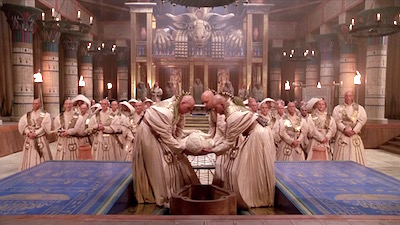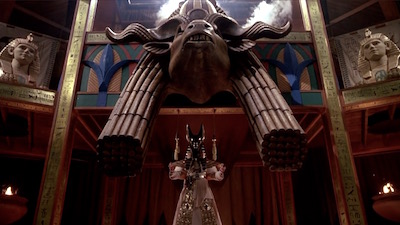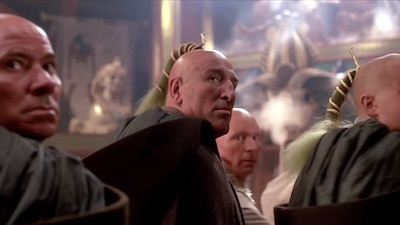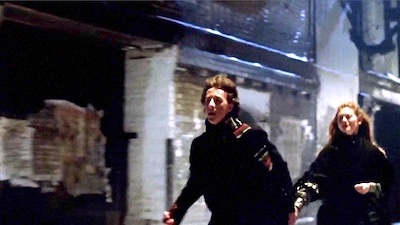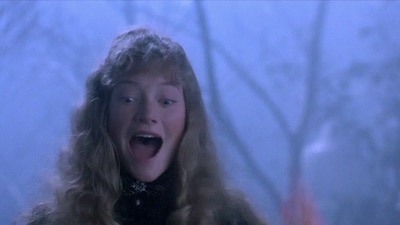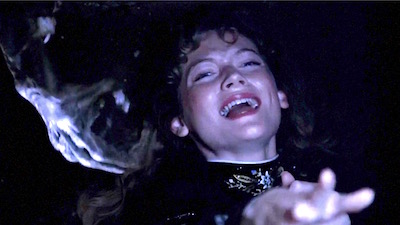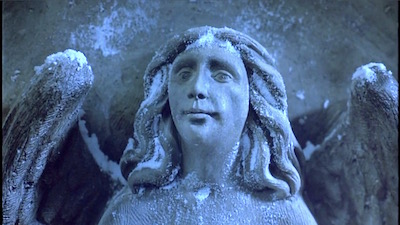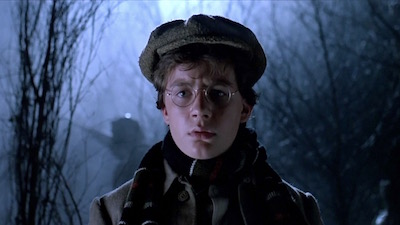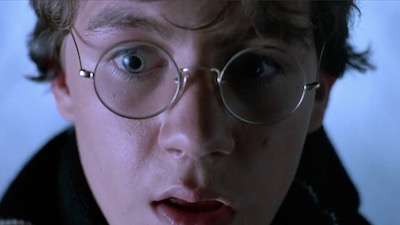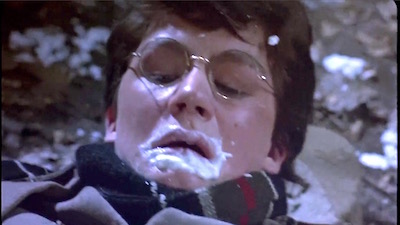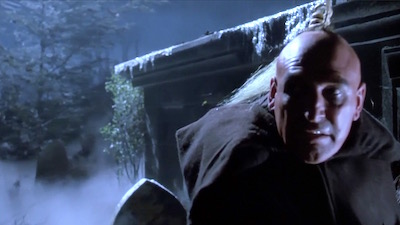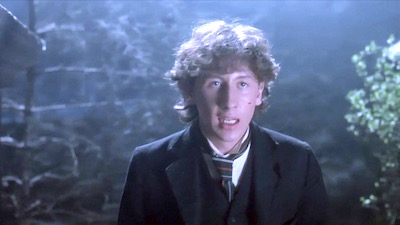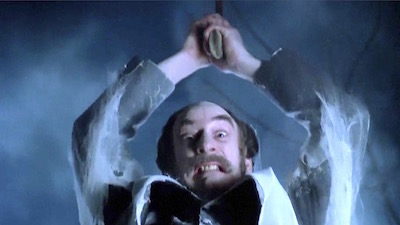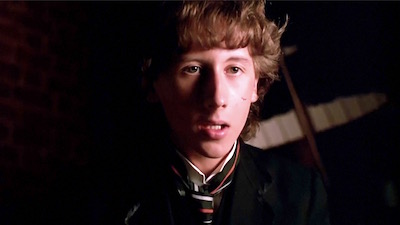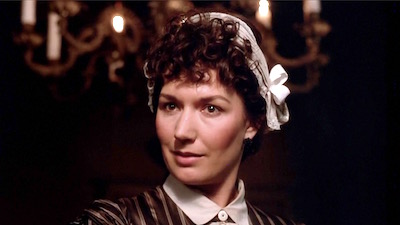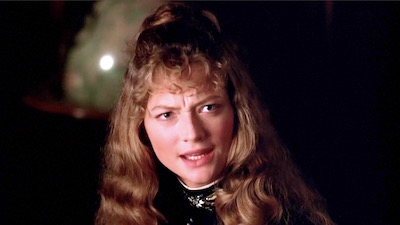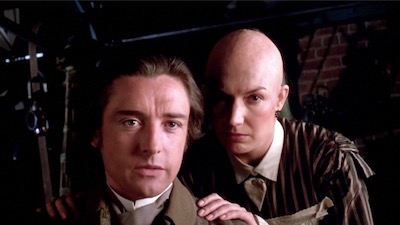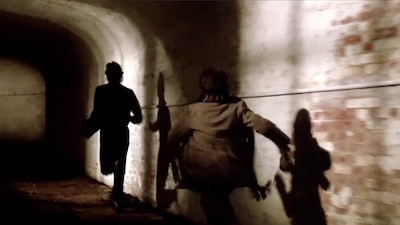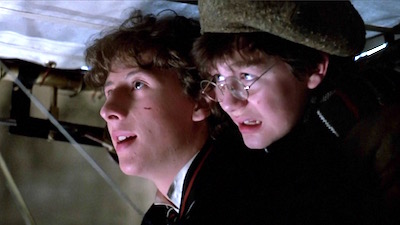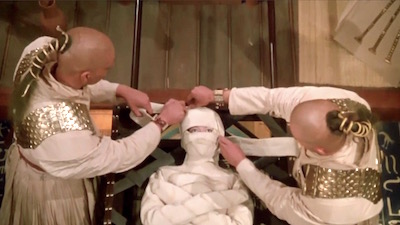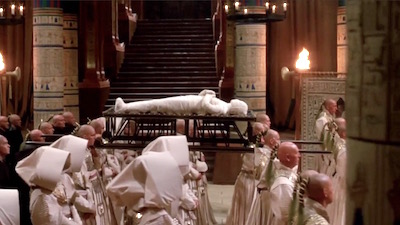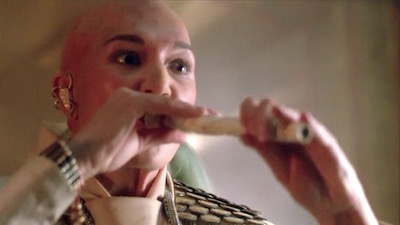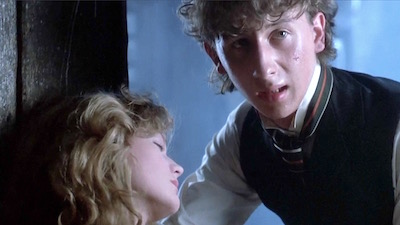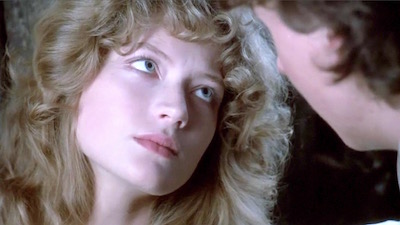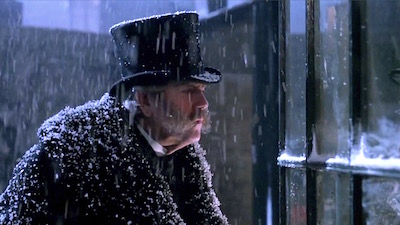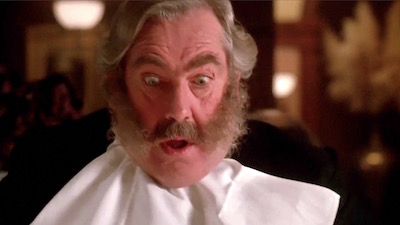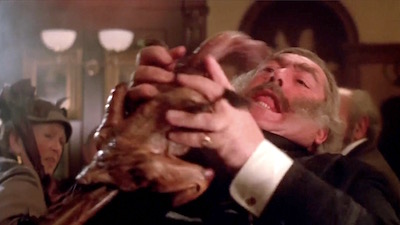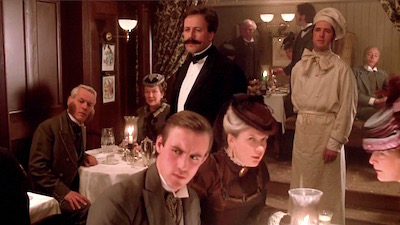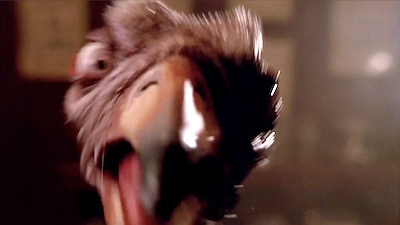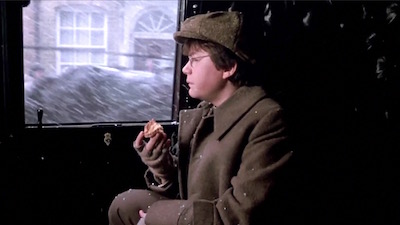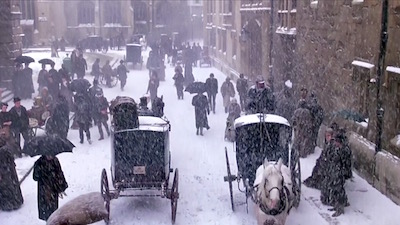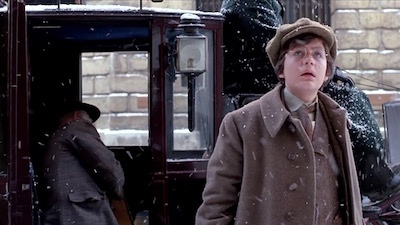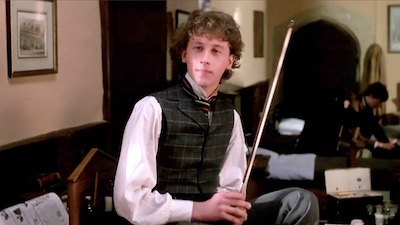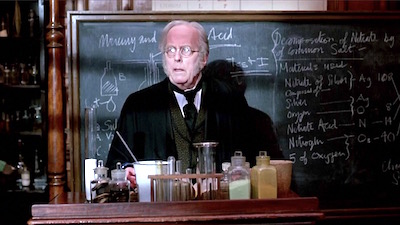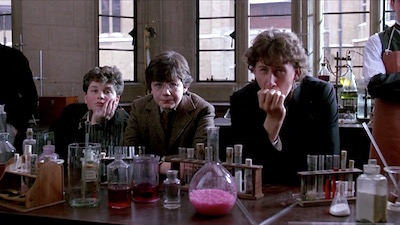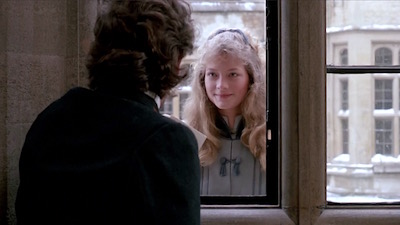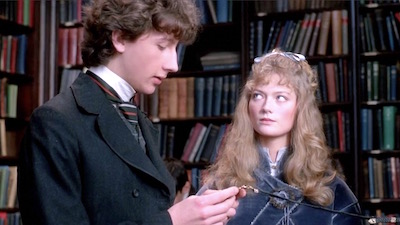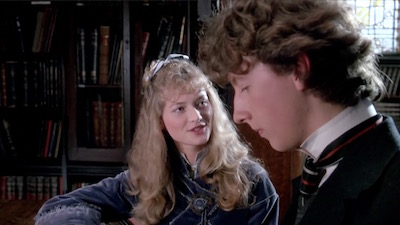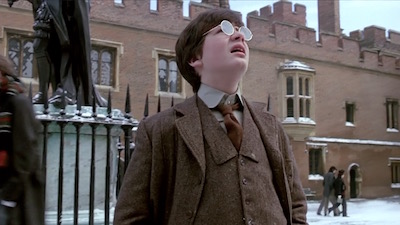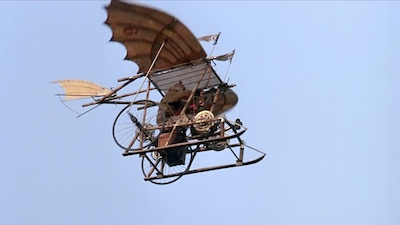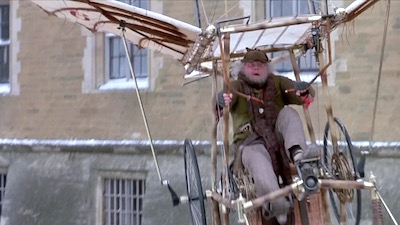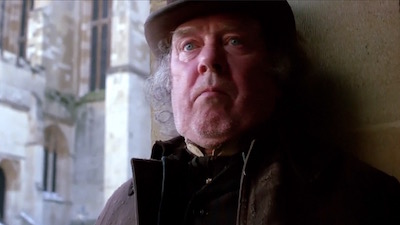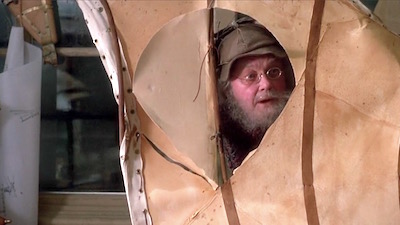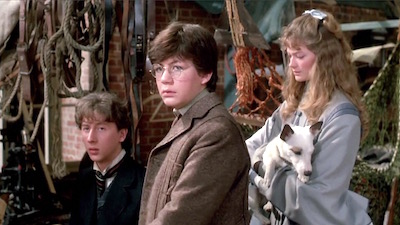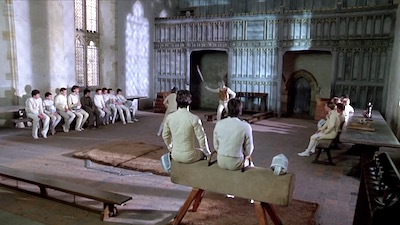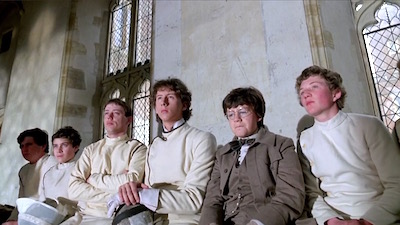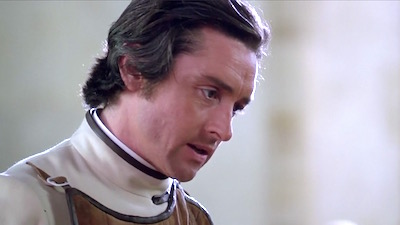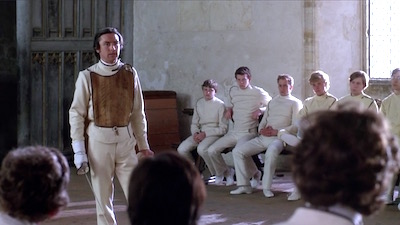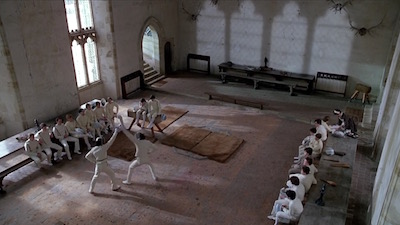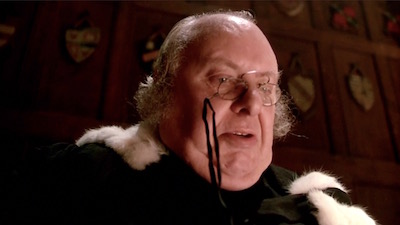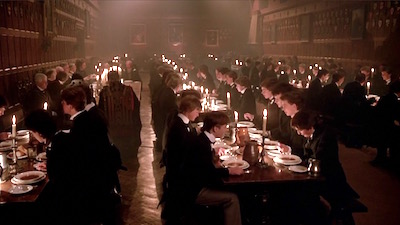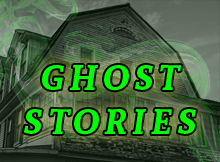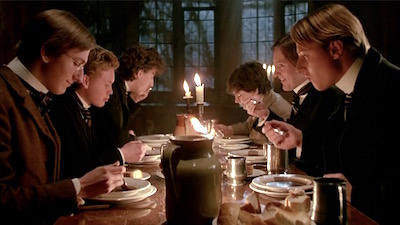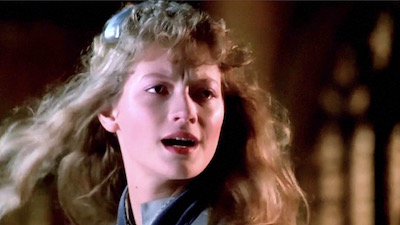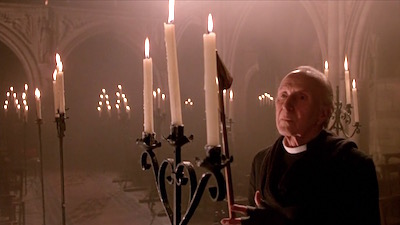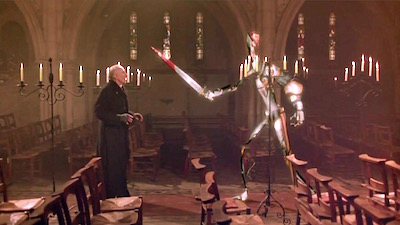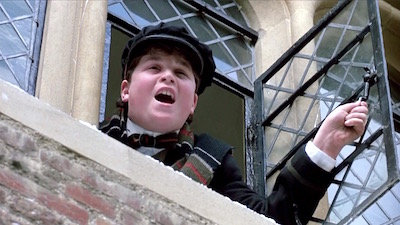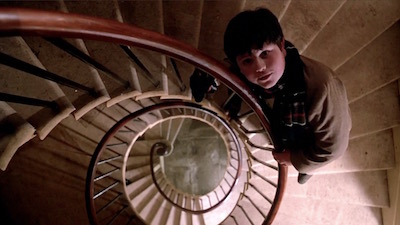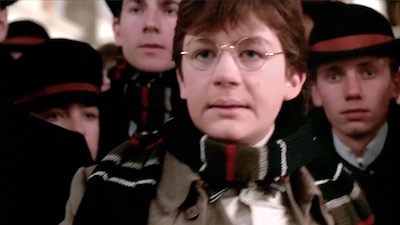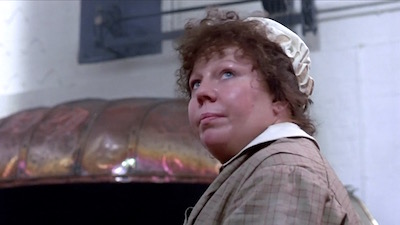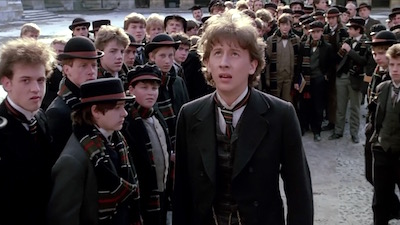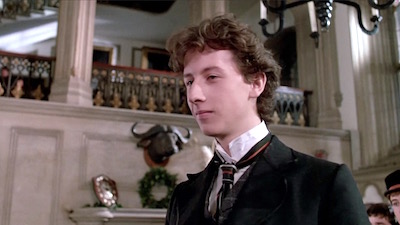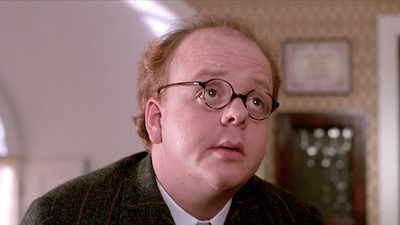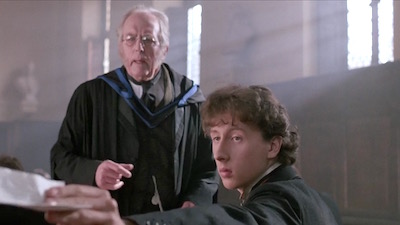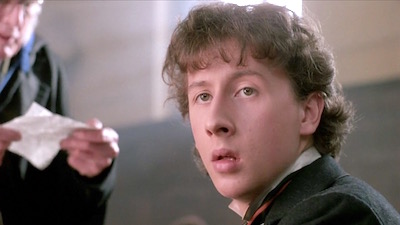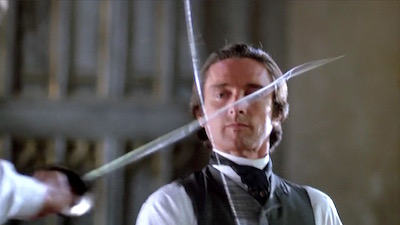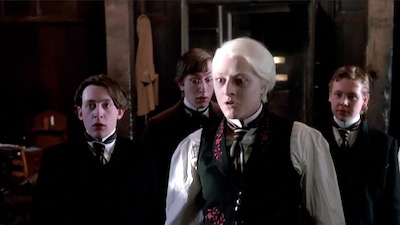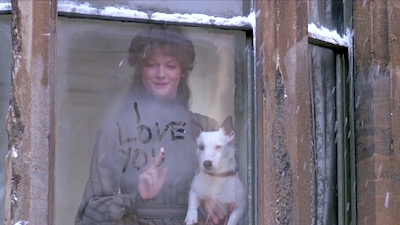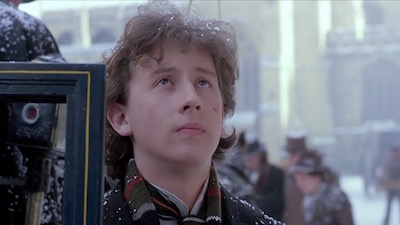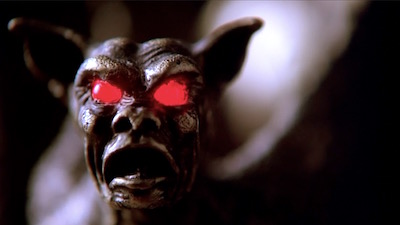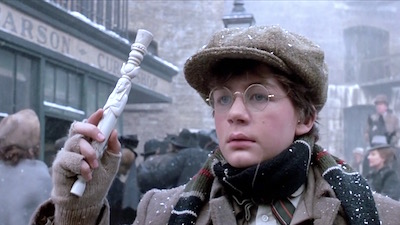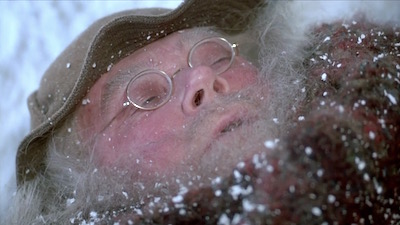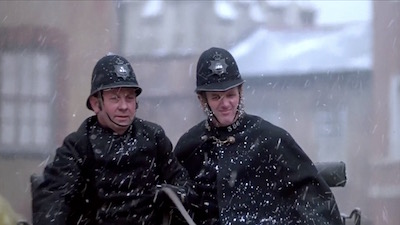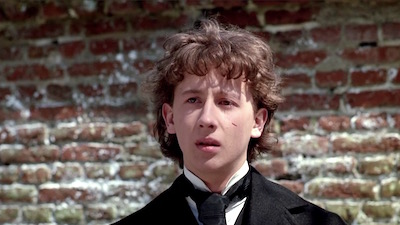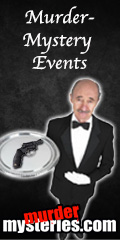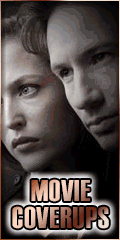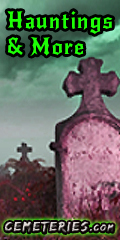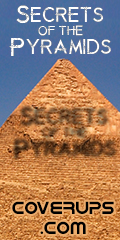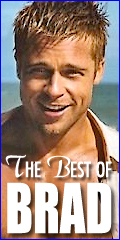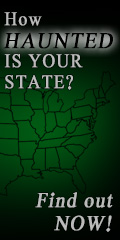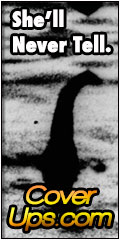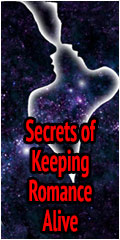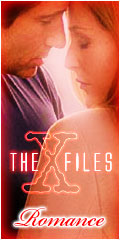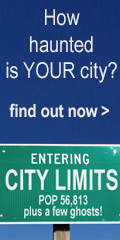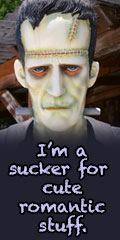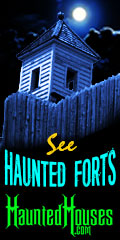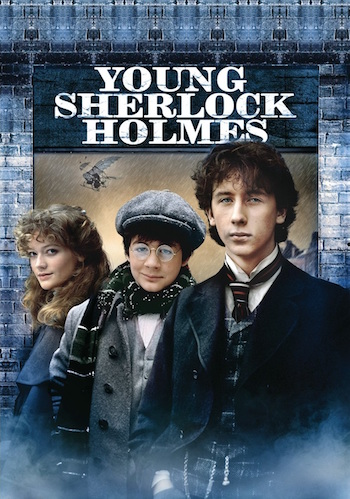
Directed by: Barry Levinson
Screenplay by: Chris Columbus
Cast:
- Nicholas Rowe as Sherlock Holmes
- Alan Cox as John Watson
- Sophie Ward as Elizabeth Hardy
- Anthony Higgins as Professor Rathe/Eh-Tar/Professor Moriarty
- Susan Fleetwood as Mrs Dribb
- Freddie Jones as Chester Cragwitch
- Nigel Stock as Rupert Waxflatter
- Roger Ashton-Griffiths as Inspector Lestrade
- Earl Rhodes as Dudley
- Brian Oulton as Master Snelgrove
- Patrick Newell as Bentley Bobster
- Donald Eccles as Reverend Duncan Nesbitt
- Matthew Ryan as Dudley's Friend
- Matthew Blakstad as Dudley's Friend
- Jonathan Lacey as Dudley's Friend
- Walter Sparrow as Ethan Engel
- Nadim Sawalha as Egyptian Tavern Owner
- Roger Brierley as Mr. Holmes
- Vivienne Chandler as Mrs. Holmes
- Lockwood West as Curiosity Shop Owner
- John Scott Martin as Cemetery Caretaker
- George Malpas as School Porter
- Willoughby Goddard as School Reverend
- Michael Cule as Policeman with Lestrade
- Ralph Tabakin as Policeman in Shop Window
- Nancy Nevinson as Hotel Receptionist
- Michael Hordern as Older John Watson (voice), the narrator
Tagline: “Before a lifetime of adventure, they had the adventure of a lifetime.”
Rated: PG-13
Young Sherlock Holmes (also known as Young Sherlock Holmes and the Pyramid of Fear) is a 1985 American mystery adventure directed by Barry Levinson and written by Chris Columbus, based on the characters created by Sir Arthur Conan Doyle. The movie depicts a young Sherlock Holmes and John Watson meeting and solving a mystery together at a boarding school.
See the Young Sherlock
Holmes trailer
The Plot
Teenagers Sherlock Holmes (Nicholas Rowe) and John Watson (Alan Cox) meet and become good friends as students at London's distinctly less-than-prestigious Brompton Academy. Watson is introduced to Holmes’ mentor, Rupert T. Waxflatter (Nigel Stock), a retired schoolmaster and inventor. Waxflatter's niece Elizabeth Hardy (Sophie Ward) is also Holmes’ close friend, and his love interest. Holmes is considered brilliant but also undisciplined, and also something of a troublemaker by the school administrators. He is closest to his fencing instructor Rathe (Anthony Higgins), who warns Holmes that he is too emotional and impulsive.

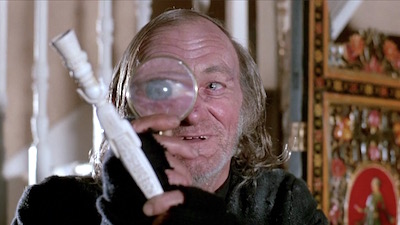
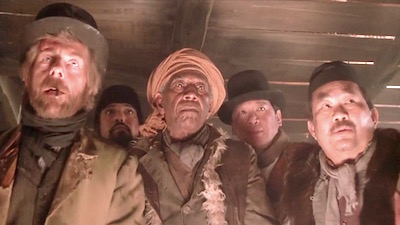
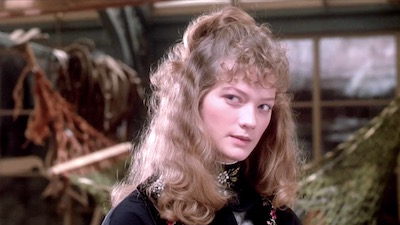
Meanwhile, a hooded figure with a blowpipe shoots Bentley Bobster and Reverend Duncan Nesbitt with hallucinogenic thorns, causing the men to have nightmarish hallucinations leading to their deaths. Holmes suspects foul play but is brushed off by Scotland Yard investigator Lestrade (Roger Ashton-Griffiths) when he speculates about a connection between the deaths. Then Holmes is expelled unjustly from the Academy because of a rival students scheming, having had Holmes framed for cheating. As Holmes prepares to leave, Professor Waxflatter is shot with a hallucinogenic thorn and and kills himself accidentally while trying to fight off imaginary gremlins. As he lays dying he whispers the word "Eh-tar" to Holmes.
Holmes meets secretly with Watson and Elizabeth and initiates his own murder investigation. He pieces clues together — a piece of cloth, a jingling sound made by the killer, and the blowpipe dropped at the Waxflatter murder scene — and the trio uncover the existence of Rame Tep, an ancient Egyptian cult of Osiris worshippers. Their main weapons are blowpipes, used to shoot thorns dipped into a solution made of plant extract which causes victims to go through intensely realistic, nightmarish hallucinations. They track the cult to a London warehouse where the Rame Tep engage in human sacrifices in a secret underground wooden pyramid. After interrupting one of their ceremonies, Holmes, Elizabeth, and Watson are chased by cultists and shot with thorns, barely escaping with their lives into a cemetery. All of them have hallucinations (Elizabeth is chased by the undead; Watson is besieged by pastries come to life and bent on force-feeding themselves to him; Holmes meets his dead father, who is furiously angry with him), but Holmes manages to keep everyone level-headed and they survive.
The following evening, in Waxflatter’s loft, Holmes and Watson discover a picture of the three victims and a fourth man, Chester Cragwitch (Freddie Jones). Unfortunately the three of them are discovered by Professor Rathe and the school nurse Mrs. Dribb (Susan Fleetwood) who make plans to expel Watson and Elizabeth in the morning. That night, while Elizabeth heads to Waxflatter's loft to salvage his work, Holmes and Watson locate Mr. Cragwitch, who reveals that in his youth he and the other men had found an underground pyramid of Rame Tep while planning to build a hotel in Egypt. This led to an angry uprising by locals which was violently suppressed by the British Army. A local boy, Eh-tar, and his sister swore revenge after their parents were killed. Cragwitch is then shot by a poisoned thorn and tries to kill Holmes — but he in turn is knocked out by Inspector Lestrade, who changed his mind about Holmes' advice after being accidentally poisoned himself by the hallucinogen.
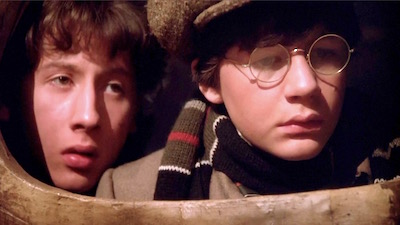

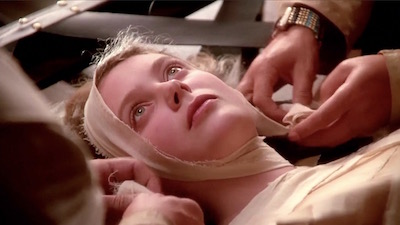
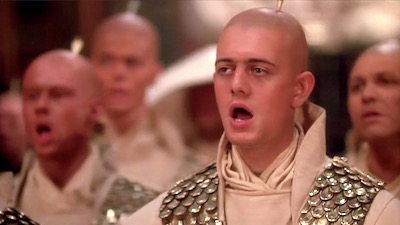
As they make their way back to the school grounds, a chance remark by Watson causes Holmes to realize that Rathe is Eh-Tar, but he and Watson arrive too late to stop Rathe and Mrs. Dribb, who is revealed to be Eh-Tar's sister, from kidnapping Elizabeth. Using Waxflatter’s self-propelled, heavier-than-air flying machine, they travel to the warehouse just in time to prevent Rathe from sacrificing Elizabeth, setting the cult's pyramid temple on fire in the process. As Rathe escapes with Elizabeth, Mrs. Dribb swallows one of her own hallucinogenic thorns in a fight with Holmes. Watson thwarts Rathe’s escape by sabotaging his carriage. Rathe tries to shoot Holmes, but Elizabeth intervenes and is wounded instead. Enraged, Holmes duels Rathe and bests him when Rathe falls through the frozen River Thames. Holmes returns to Elizabeth and holds her as she dies.
Afterwards, as he exchanges goodbyes with Watson, Holmes explains how he deduced the identity of Rathe and Dribb, with Watson pointing out that "Rathe" is "Eh-Tar" spelled backwards — a clue that Holmes had not noticed. Holmes says he will transfer to another school to take his mind off Elizabeth. Watson gives him a pipe as a farewell present. As Holmes leaves by horse carriage with his new detective outfit, Watson's older self (the Narrator) foresees the likelihood that he would have more adventures with Holmes.
Behind the Scenes
While Young Sherlock Holmes is based on characters created by Sir Arthur Conan Doyle, the story is an original one written by Chris Columbus. While Columbus admitted that he was "very worried about offending some of the Holmes purists" he was guided by the original Doyle stories.
Of the creation of the film, Columbus says:
"The thing that was most important to me was why Holmes became so cold and calculating, and why he was alone for the rest of his life. That's why he is so emotional in the film; as a youngster, he was ruled by emotion, he fell in love with the love of his life, and as a result of what happens in this film, he becomes the person he was later."
The movie also explains where Holmes gains his trademark attire (even though Doyle never described these attires in his book. The pipe — most likely a stage adoption to prevent muffling the actor voice — the hat — which does in fact appear in at least one of the original Sidney Paget drawings for The Strand — and the classic cloak — built into some coats for extra warmth — are not Hollywood contrivances. To wit: the pipe was a Christmas present from Watson, the hunting hat originally belonged to Professor Waxflatter and was given to him by Elizabeth after the professor died, and the cloak was Rathe's, but taken by Holmes ("Call it a trophy; the skin of a leopard") after he defeated him.
Young Sherlock Holmes is notable for another reason: it included the first fully computer-generated photorealistic animated character, a knight made from a stained glass window. The effect was the first CG character to be scanned and painted directly onto film with a laser. The effect was the work of John Lasseter.
In the U.K. and Australia, the film was known as Young Sherlock Holmes and the Pyramid of Fear.
The fencing scenes were shot at Penshurst Place in Kent.
The Critics
The film received mixed to positive reviews, with a 65% rating on Rotten Tomatoes. Roger Ebert gave it 3/4 stars and Christopher Null of Filmcritic.com called the film "great fun".
Leslie Bennetts of the New York Times called it "a lighthearted murder mystery that weds Sir Arthur Conan Doyle to the kind of rollicking action-adventure that has made Steven Spielberg the most successful movie maker in the world".
